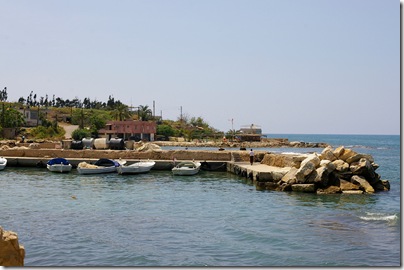My friend A.D. Riddle sends along this interesting quotation from J. B. Pritchard, Recovering Sarepta, A Phoenician City: Excavations at Sarafand, Lebanon, 1969-1974 (1978):
The western face of the promontory had been eroded by heavy seas. In the scarp, stubs of walls and masses of Roman sherds could be seen, but nothing earlier. Scouring the surface of the fields on top of the mound for diagnostic sherds that might date its occupation, we found two handles from amphorae that had been imported from the Island of Rhodes. They could be dated to the Hellenistic period by the labels in Greek which had been stamped on them. Obviously the site had been occupied at least two centuries before the Roman port was built. Below the Hellenistic debris there might be the remains of an Iron Age settlement, but on the surface there was no evidence—not a single potsherd—to witness a Phoenician presence (p. 71).
In the excavations, Pritchard revealed seven layers preceding the Hellenistic period, including five from the Iron Age.
